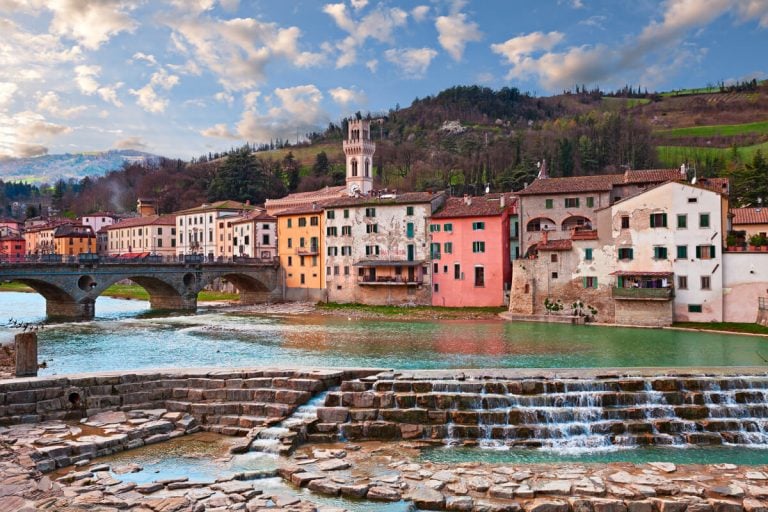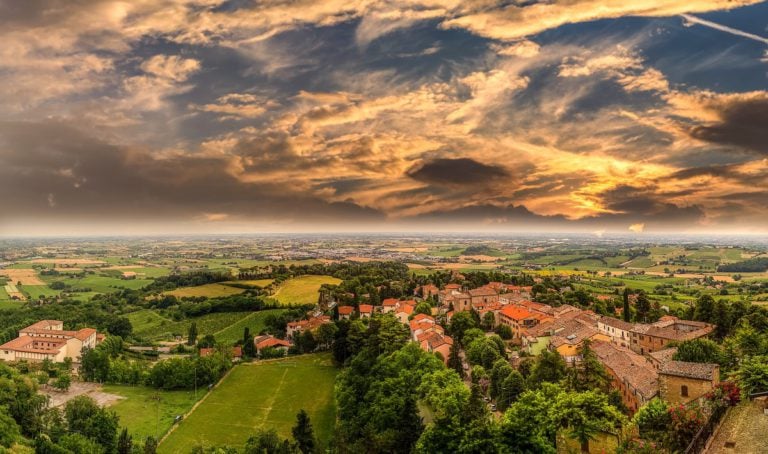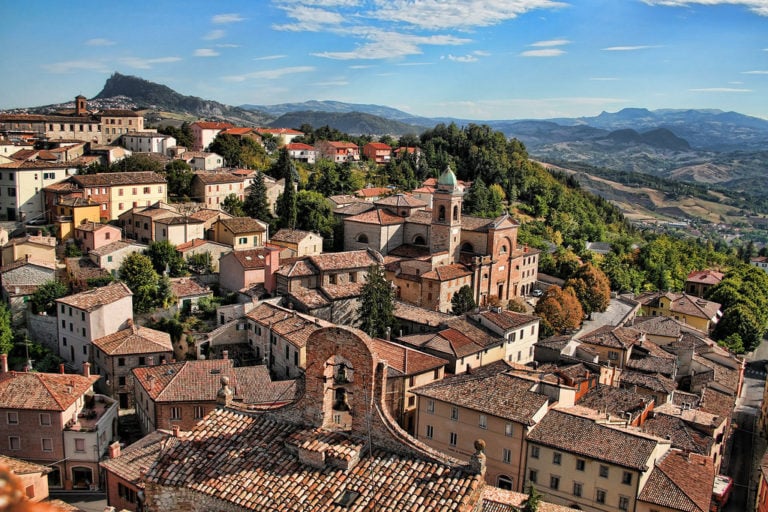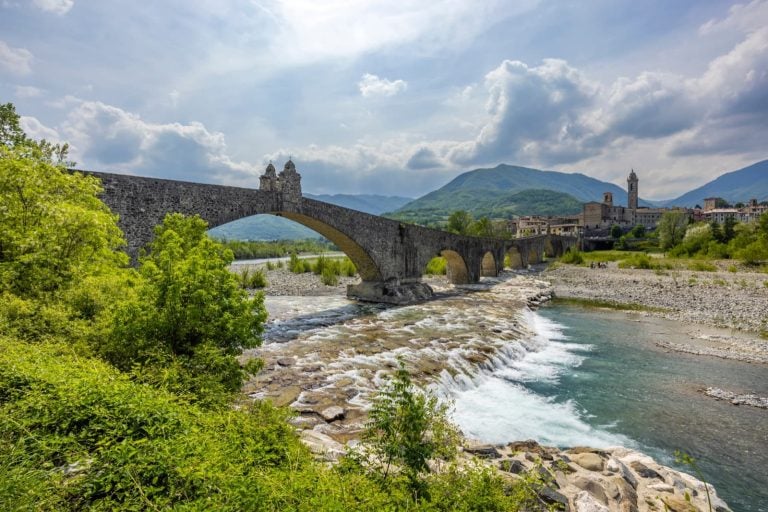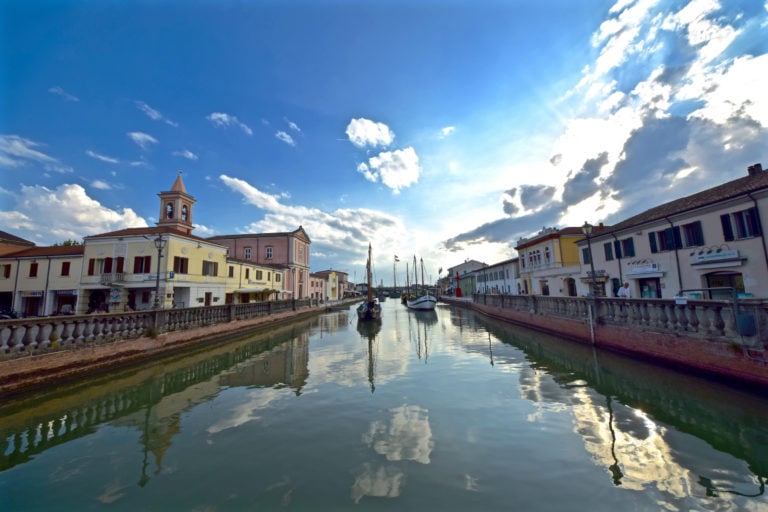Perched on a rocky spur on the ridge separating the Ongina and Stirone valleys, the village of Vigoleno is one of the most historically and visually fascinating in Piacenza province.

Vigoleno – Pic by Massimo Telò
History
The earliest historical mention of Vigoleno dates back to 1141 when it was an outpost of Piacenza standing guard over the road to Tuscany and a defensive bulwark in the Apennine valleys. In 1200, the fortress came under the control of the Scotti family. Unusually for Italy, they would administer the village almost continuously from the late 14th to the 20th century.
Vigoleno has kept its medieval heritage almost completely intact and is now one of the Borghi più belli d’Italia (an association of Italy’s loveliest small historic towns). The Italian Touring Club has awarded it Orange Flag status, too.
What to see
Originally a defensive settlement, Vigoleno is now a perfectly preserved example of a late-medieval town. The first thing to do, then, is simply to stroll through the streets and the castle square, to breathe in some of that age-old air that these places still seem to exude.
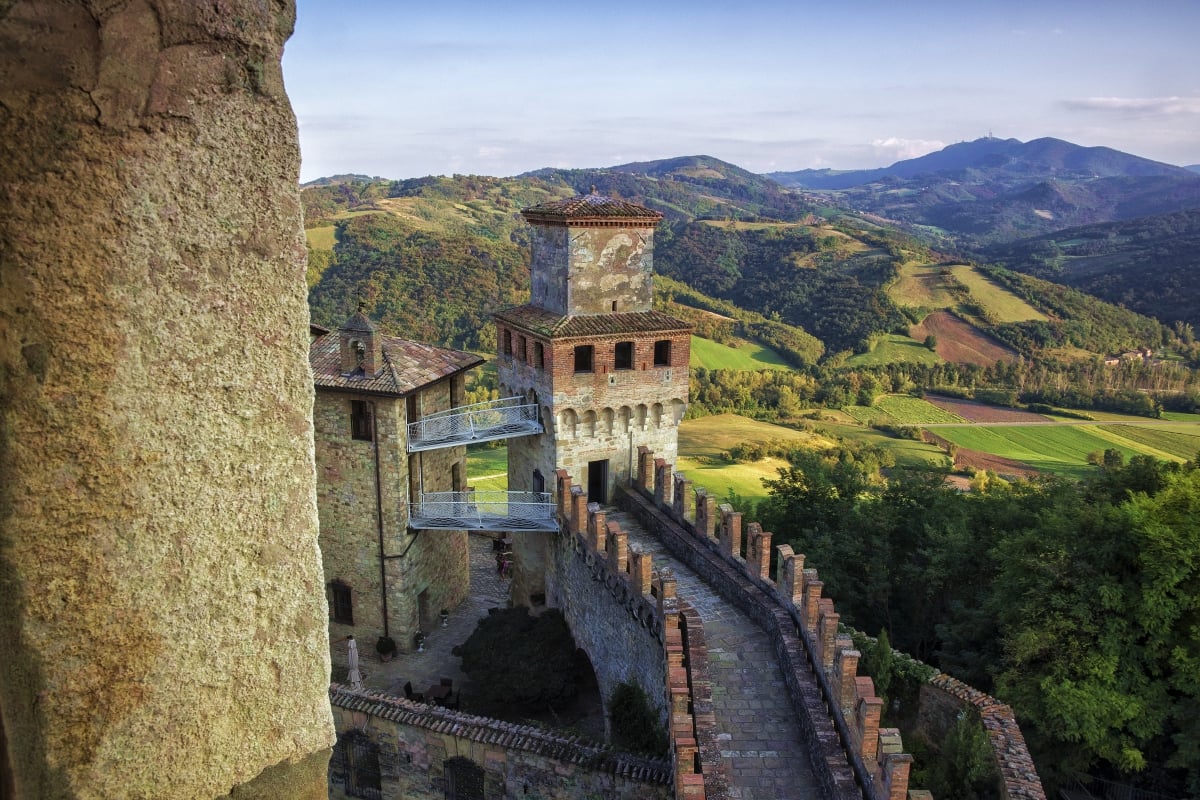
Vigoleno Castle – Pic by Cristiano della Casa
Then there is the rectangular keep that dominates the village and is now home to a photographic museum on Vigoleno’s history, a fascinating opportunity to learn how Emilia-Romagna’s valleys once were. From the keep, walk to the castle’s second tower and soak up the beautiful views of the rolling countryside laid out below. Away from the centre, St George’s parish church (Pieve di San Giorgio) dates back to when the hamlet was founded and is one of the most important examples of sacred Romanesque architecture in the Piacenza area. Vigoleno is also home to the Orsanti Museum, one of the precious few museums in the world that tell the story of the orsanti, travelling theatre players of bygone days.
What to Do
SPRING
Amble among the ancient walkways to admire the view of the Apennine valleys. Or bike through nearby Stirone Park, one of many protected areas in the Duchy of Parma and Piacenza Parks.
SUMMER
A walk in the hills is a great way to escape the urban heat on the plain, but the nearby villages are also well worth exploring by car. A hot tip? Try the spas of Salsomaggiore, Castell’Arquato and the duchy’s many beautiful castles.
AUTUMN
You may not have realized, but Vigoleno is in the Colli Piacentini wine-producing area. If you are here in the autumn, you simply must visit one of the many local winemakers to try the Vin Santo of Vigoleno DOC.
WINTER
Walk the Apennine ways that seem to float on the mist that lines the valleys below, a treat in the heart of nature.
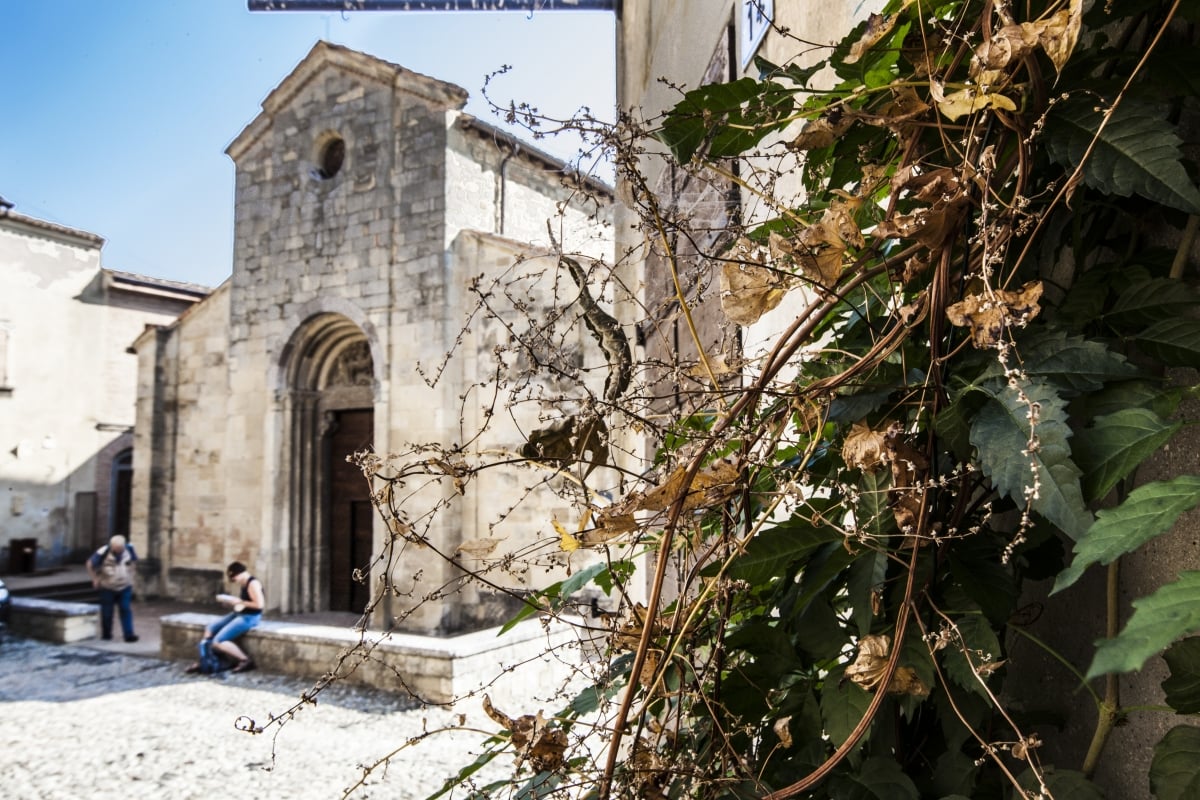
Pieve di San Giorgio – Pic by Alberto Bruschi
Events
The “Vin Santo Dinner” – August
a medieval wine-tasting event in the first week of August every year
The International Festival of Street Artists in Vernasca – July
every year on the 28, 29 and 30 July
Cantamaggio – April
a festival of traditional folk song and dance in the nearby village of Vernasca, usually on April 30
The potato festival – September
a popular food fair on the third Sunday in September in Vezzolacca
Food and Wine
Piacenza salami is produced in this area. But for a local product with a really old tradition behind it, look no further than Vin Santo of Vigoleno. The grape variety and the warm sun, the particular soil and the long-cherished production method all combine to give it an unmistakable aroma and flavor. It is aged in barrels for at least 5 years, and the alcohol content varies with the vintage but cannot be less than 18 degrees.
Pilgrim paths and walking trails
The Via Francigena runs through the nearby Val Taro, in particular the stretch from Piacenza to Siena.
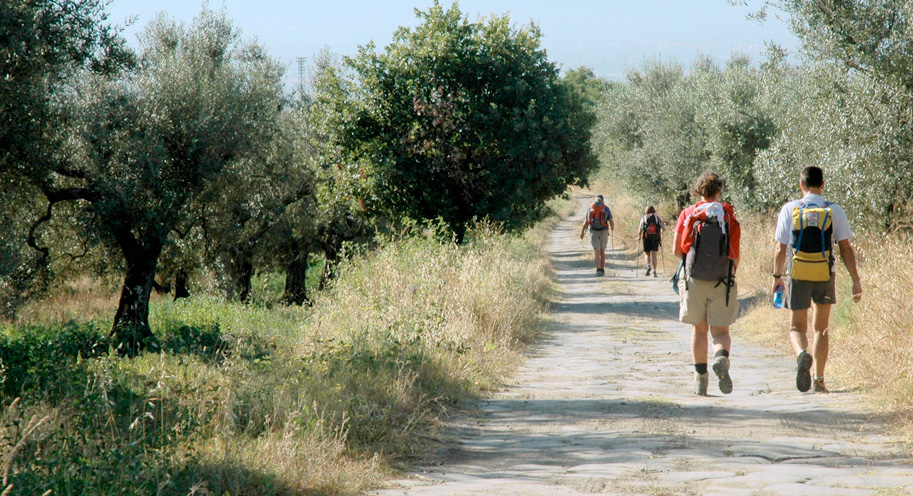
Francigena Route
How to Get to Vigoleno
PLANE
Parma airport (about 40 km)
Milan Linate Airport (about 104 km)
Bologna airport (about 130 km)
CAR
Highway A1: exit at Fiorenzuola d’Arda SP 462R up to Fiorenzuola, continue on the SS. 9 “Via Emilia”, then take the SP 4 for Castell’Arquato, Vernasca.
From Piacenza: take SS. 9 “Via Emilia”, after passing the town of Cadeo continue following the signs for Fiorenzuola d’Arda, take the SP 4 and follow the signs first for Castell’Arquato then for Vernasca.
TRAIN + BUS
From Parma station, regional train to Salsomaggiore Terme;
From Salsomaggiore Terme Bus E47, Vigoleno stop.
The Emilia Romagna Villages section is dedicated to Villages that are part of the Associations Borghi più belli d’Italia, Bandiere Arancioni del Touring Club & Borghi autentici d’Italia.
Author

Walter Manni
Explorer and Adventurer: loves sailing the oceans, climbing the highest mountains and surfing on the waves of the web
You may also like
Five villages reachable by train in Emilia-Romagna
by Giulia Delaini /// April 12, 2018
The most beautiful Italian Villages in Emilia-Romagna
by Elisa Mazzini /// November 26, 2024

Interested in our newsletter?
Every first of the month, an email (in Italian) with selected contents and upcoming events.
The “Orange Flag” Villages in Emilia-Romagna
by Elisa Mazzini /// December 10, 2024
